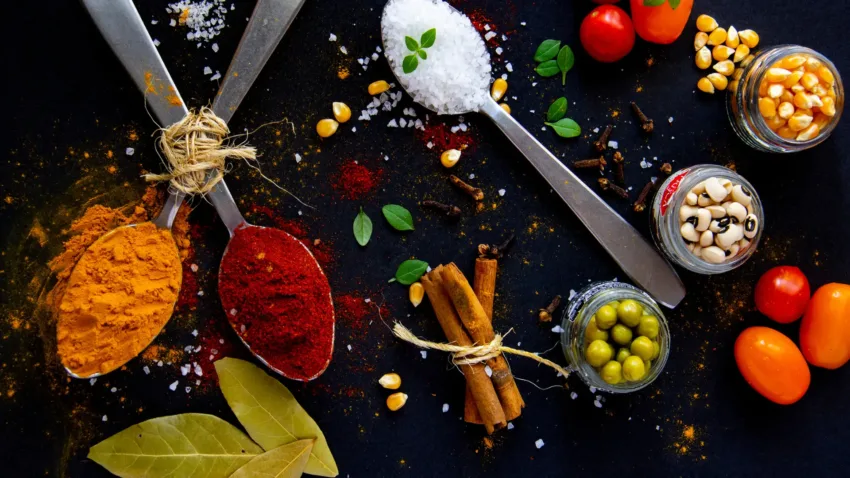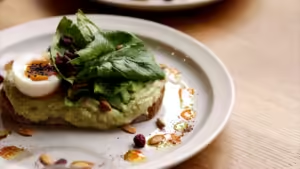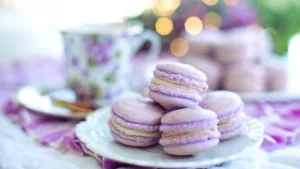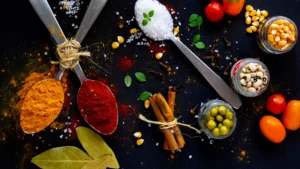Picture this: You’re in the middle of preparing your favorite dish, your kitchen smells divine, and everything’s going perfectly—until you realize you can’t find the cumin. Frustration kicks in as you start rummaging through drawers, knocking over jars, and maybe even spilling a few. Sound familiar?
An organized spice pantry might seem like a small detail, but it can completely change how smoothly your cooking process flows. With well-organized spices, you’ll not only save time but also cut down on food waste by using what you have before it expires. Plus, a visually appealing spice setup can turn your kitchen into an inspiring space for culinary creativity.
Whether you’re cooking for a family dinner, preparing vegan or gluten-free meals, or just experimenting with flavors, this guide will help you organize your spices step-by-step so you can enjoy a more efficient kitchen.
Step 1: Assess What You Have
The first and arguably most important step in organizing your spices is to know what you’re working with. This is your chance to pull every spice out of the cupboard and lay them out on the counter for a full inventory.
Here’s what to look for:
- Duplicates: If you find two or three bottles of the same spice (hello, multiple bottles of cinnamon), consolidate them if they’re still fresh or toss the older ones.
- Expired Spices: Spices don’t spoil like fresh produce, but they lose their potency over time. A spice that’s past its best-by date won’t ruin your meal, but it won’t add the vibrant flavors you want either.
- How to check for freshness: Give it the sniff test! If a spice has a faint or bland smell, it’s time to let it go.
- Hard-to-Use Jars: Any jars that are difficult to open, don’t seal properly, or don’t fit well in your storage should be replaced.
Pro Tip: If you find yourself with a ton of partially used spices, make a plan to use them. For instance, if you have a lot of cumin or turmeric, think about trying new recipes that use those spices before they lose their flavor. This could also be a great time to experiment with new cuisine types!
Bonus Tip for Vegan and Gluten-Free Kitchens: Some essential spices for vegan or gluten-free diets—like nutritional yeast for vegans or xanthan gum for gluten-free bakers—may not be used as frequently as others. Make a mental note to check those first, as they might need replacing more often than your everyday spices.
Step 2: Categorize Your Spices (Regular, Vegan, Gluten-Free)
Once you’ve weeded out expired or unused spices, the next step is to group them into categories. Organizing your spices into logical groups will make it much easier to find what you need while cooking.
Here’s a detailed breakdown of how to categorize:
- Everyday Essentials: These are the spices you reach for all the time—think salt, pepper, garlic powder, and onion powder. By keeping these at arm’s reach, you’ll always be ready for quick seasoning.
- Baking Spices: These include spices like cinnamon, nutmeg, ginger, allspice, and cloves. Since you only need them when baking, store them in their own section of the pantry, separate from your savory spices.
- World Cuisine: If you love experimenting with global dishes, you might have spices dedicated to specific cuisines. For example, group cumin, paprika, and chili powder for Mexican dishes, or store turmeric, coriander, and cardamom together for Indian cooking.
- Vegan Spices: For plant-based cooking, spices like smoked paprika, nutritional yeast, turmeric, and black salt (kala namak) are frequently used to add umami and depth to vegan dishes. Keep them in a dedicated section to simplify meal prep.
- Gluten-Free Essentials: Gluten-free cooks often rely on specific thickeners like xanthan gum, arrowroot powder, and cornstarch. These should be stored in a separate space to avoid cross-contamination with regular baking items like flour.
Pro Tip: If you have dietary restrictions or cook for others who do, it can be helpful to keep gluten-free or vegan spices separate from your regular spices. This way, you avoid accidental cross-contamination, especially for those with severe allergies.
Step 3: Choose Your Storage Solutions
Choosing the right storage method is a game-changer for your spice organization. The best solution will depend on the size of your kitchen, how often you cook, and the type of spices you use.
Here are some tried-and-true storage options:
- Drawer Organizers: Perfect for those with extra drawer space. Drawer organizers allow you to lay your spices flat, with the labels facing up, so you can quickly grab what you need without sorting through a cluttered cabinet.
- Tiered Shelves: These shelves create layers in your spice cabinet, ensuring that spices at the back are still visible and accessible. This is especially helpful if you have a deep cupboard and want to avoid digging around.
- Magnetic Spice Jars: For a modern, space-saving solution, magnetic jars can be stuck to the side of your fridge or a metal backsplash. This is not only convenient but also visually appealing.
- Airtight Jars: Spices bought in bulk should be stored in airtight containers to preserve their freshness. Clear jars with tight seals work best. If you often use whole spices (like cumin seeds or cinnamon sticks), airtight jars are a must for keeping them fresh.
Pro Tip: Opt for containers that are similar in size and shape. Not only does this create a cleaner, more organized look, but it also maximizes the space you have.
Bonus Tip: Keep your most-used spices in front or in easy-to-reach areas. If you have to dig for your essentials, you’ll end up frustrated and more likely to buy duplicates.
Step 4: Labeling for Easy Access
Labeling is more than just a practical step—it can also be fun! Clear, well-placed labels will save you time in the kitchen and ensure you always grab the right spice.
Here are some creative and effective labeling options:
- Chalkboard Labels: These reusable labels are great if you frequently change out your spices. Simply wipe off the label and rewrite it as needed.
- Clear Labels with Large Fonts: For a more permanent solution, use clear labels with large, easy-to-read fonts. This is particularly helpful if you store your spices in opaque containers or drawers.
- Color-Coded Labels: Assign different colors to different categories. For example, use green labels for vegan spices, blue for gluten-free, and white for everyday essentials. This way, you can visually sort through your pantry in seconds.
Pro Tip: Include the purchase date on your labels. This will help you track how long a spice has been sitting in your pantry, making it easier to decide when to replace it.
Step 5: Optimize Shelf and Drawer Space
A well-organized kitchen isn’t just about what you have—it’s also about how you store it. Whether you have a small apartment kitchen or a spacious pantry, optimizing your space will make a big difference in how quickly and easily you can access your spices.
Here are some space-saving ideas:
- Use the Inside of Cabinet Doors: Install racks or hooks on the inside of your cabinet doors to hold small spice jars. This works especially well for those with limited shelf space.
- Lazy Susans: If you have deep cupboards, a Lazy Susan (a rotating tray) is a great way to make sure you can reach all your spices without knocking things over.
- Stackable Shelves: These allow you to take advantage of vertical space, creating extra “shelves” inside your pantry for your spices.
- Drawer Dividers: For those who prefer storing spices in a drawer, dividers will keep everything neat and ensure your jars don’t roll around when you open or close the drawer.
Pro Tip: If your space allows, try arranging your spices alphabetically or by category (like all baking spices together). This small step can save you tons of time in the long run.
Step 6: Make Use of a Spice Rotation System
A spice rotation system is particularly useful if you have a large collection or tend to experiment with different spices. Rotating your spices ensures that none are forgotten and all are used before they lose their flavor.
Here’s how to create an easy rotation system:
- Rotating Spice Rack: Invest in a small, rotating spice rack. This allows you to bring older spices to the front and push newer ones toward the back, so you always use what’s freshest.
- Seasonal Rotation: Some spices are more frequently used in specific seasons. Keep pumpkin spice, cloves, and cinnamon at the front of your shelf during fall and winter, and move them to the back during the spring and summer when you’re more likely to use cilantro, basil, and dill.
Pro Tip: Mark your calendar for a “spice check-up” every six months. This will help ensure your rotation system is working and that no spices are being forgotten.
Enjoy a Stress-Free Kitchen Experience
By taking the time to organize your spice pantry, you’ll not only create a more efficient cooking space, but you’ll also elevate your culinary creations. The key is to develop a system that works for your unique cooking style—whether you’re whipping up quick weeknight dinners, baking indulgent treats, or experimenting with vegan or gluten-free dishes.
Remember, a well-organized spice collection isn’t just about aesthetics; it’s about making your life easier, your cooking more flavorful, and your kitchen a place you love to be.
For more delicious ideas, don’t forget to check out our other blog posts. And if you’re looking for even more plant-based inspiration, visit our Lovely Voyage page where you can find a selection of books available on Amazon. They’re packed with vegan, vegetarian, and gluten-free recipes, including easy-to-make desserts!
Now, get ready to spice things up—literally!
- Quick Breakfasts: Energize Your MorningStarting your day with a nutritious breakfast can make a significant difference in your energy levels and mood throughout the day. But when mornings are hectic,…
- Elegant Pastries: Impress with These Beautiful TreatThere’s something undeniably magical about a beautifully crafted pastry — it’s not just a dessert, but a work of art! Whether you’re hosting a fancy dinner…
- Organizing Your Spices: Tips for an Efficient PantryPicture this: You’re in the middle of preparing your favorite dish, your kitchen smells divine, and everything’s going perfectly—until you realize you can’t find the cumin….



